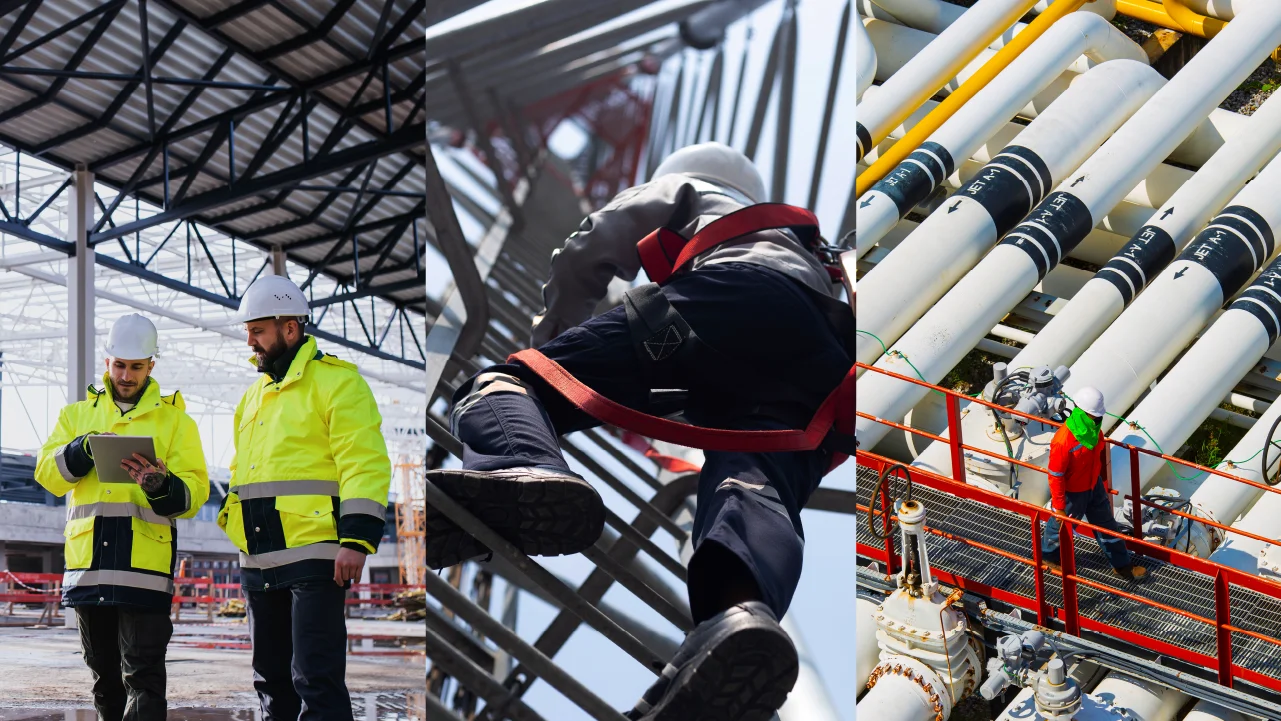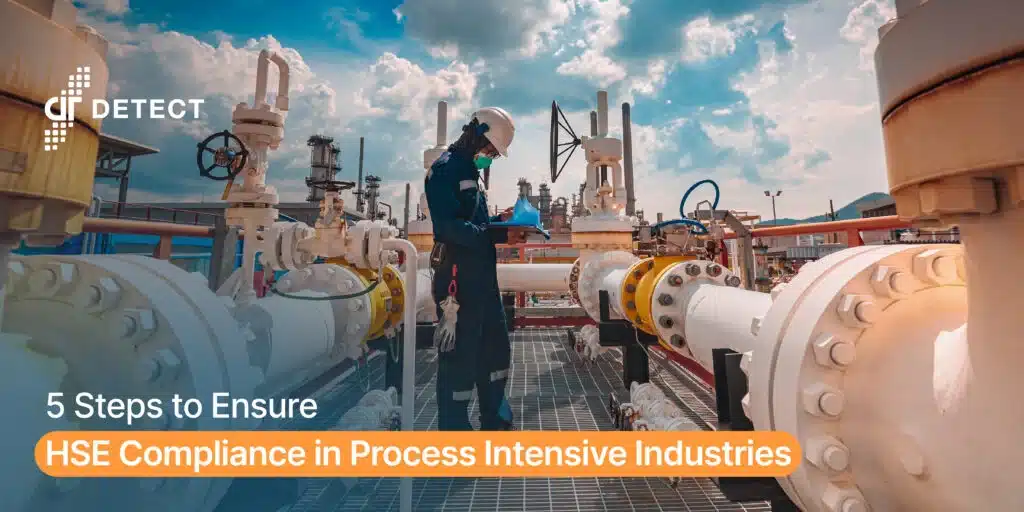Table of Contents
Demand, Exploitation, and the Ominous Peril

What Makes the Refinery a Dangerous Place to Work?
The petroleum refining process broadly involves the distillation, cracking, reformation, blending, and treatment of crude oil. A refinery hosts units that specialize in carrying out these operations. Inside some of these units, oil temperatures can soar to 390–400 °C, pinning the mercury at a perpetual 60-80 °C. Noise levels for their part may soar to 90 dBA. Continuous exposure to these conditions increases the risk of fatigue-related errors, setting up a daunting Health, Safety, and Environment (HSE) challenge for safety officers. The huge scale of refineries amplifies this challenge further.
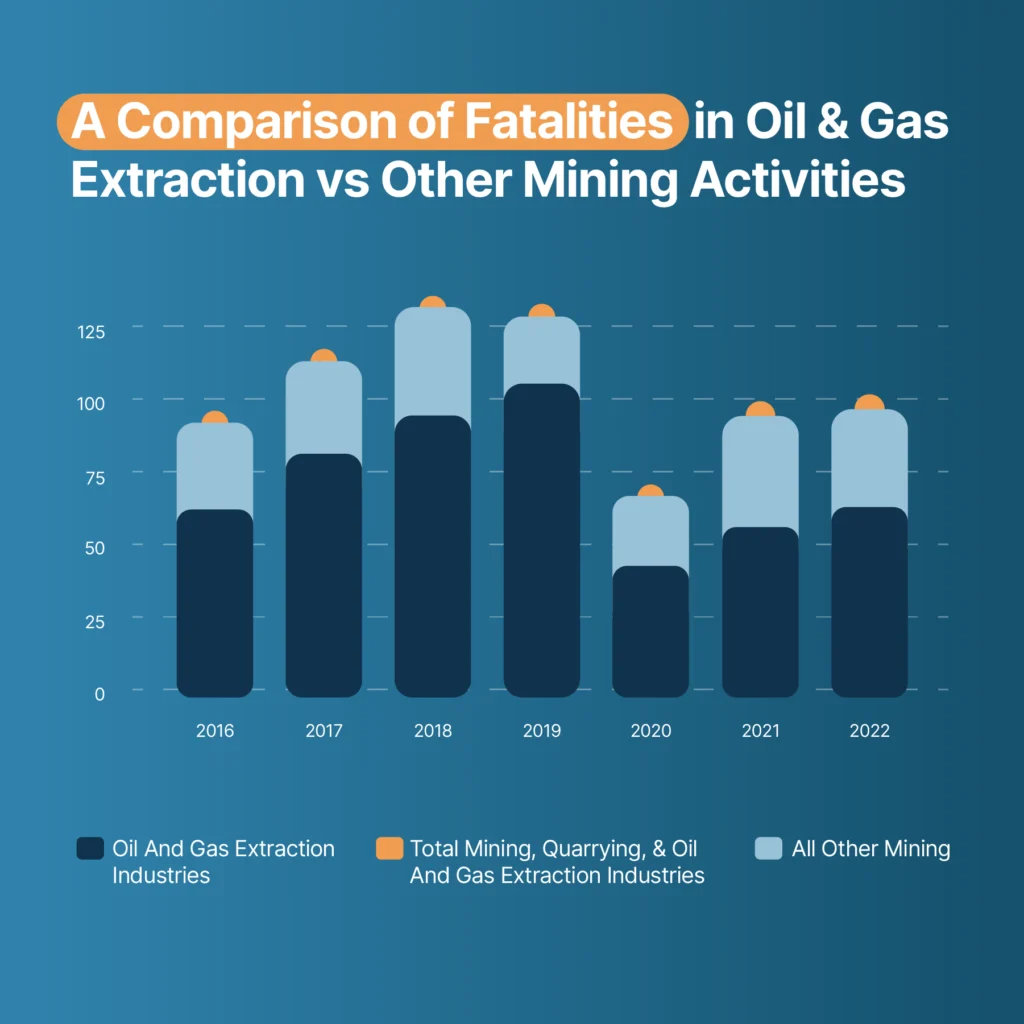
As a culmination of all these factors, 1 out of every 50 refinery workers is prone to an injury while discharging their duty. The petrochemical industry records 100+ deaths and about 8500 lost time injuries every year.
What Makes the Refinery a Dangerous Place to Work?
To be able to better tackle the HSE challenges in refineries, it is imperative to know exactly what we are up against. The following section aims to break down risks and hazards faced by refinery workers using historical occurrence data based on root cause analysis.

Explosions and Fires
Explosions have been the single largest contributor to fatal accidents at refineries and are closely followed by falls and object strikes. With flammable liquids and gases gushing around the pipelines, the omnipresent threat of explosions and fires casts an eerie shadow. Volatile hydrocarbons and heavy vapor conspire to create a combustible concoction that can escape through poorly maintained equipment, faulty tanks, or even transportation mishaps. This lethal combination can set the stage for devastating infernos.
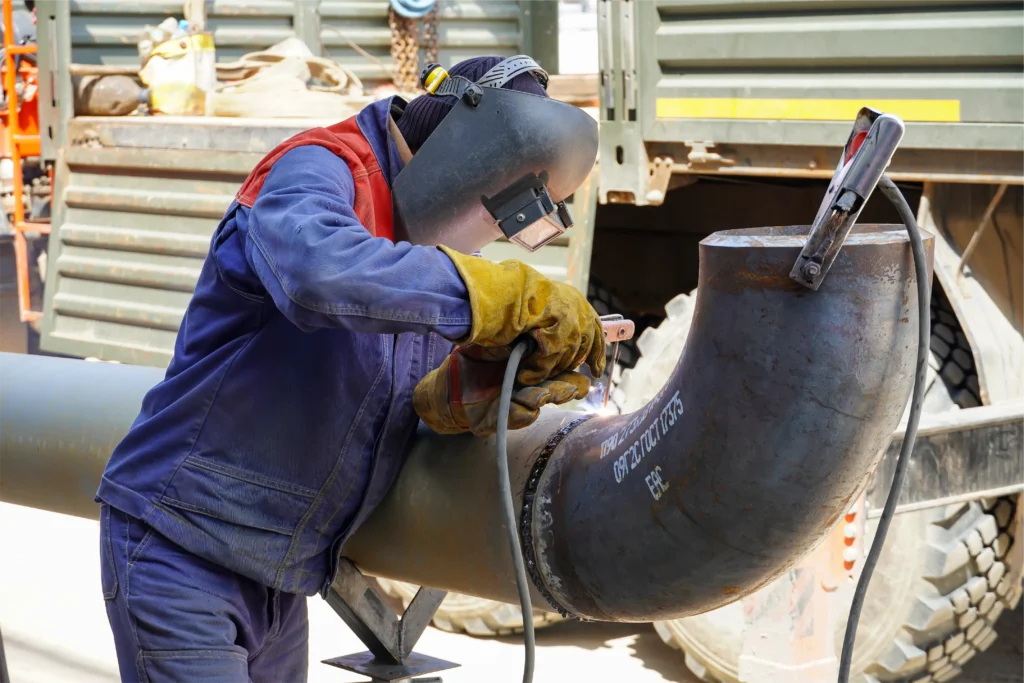
In the blink of an eye, a stray spark can trigger a cataclysmic explosion. To add to the complexity, the environment itself can play a malevolent role, whether in the form of atmospheric lightning during stormy weather or a seemingly innocent cigarette. Such is the volatile nature of a refinery.
The infamous Torrance refinery explosion of 2015 serves as a haunting reminder, caused by a corroded valve that allowed air and hydrocarbons to mingle.
Falls from Heights
As workers navigate the labyrinthine heights of refineries, scaling temporary scaffoldings to maintain towering equipment, a hazardous ballet ensues. The grimy and treacherous nature of these precarious workplaces, coupled with long hours and exhausting conditions, becomes a breeding ground for fatigue-induced accidents. Every step becomes a delicate dance on a tightrope between safety and disaster. The absence of proper safety measures, such as guardrails and secure equipment, leaves workers vulnerable to fatal falls and falling objects.
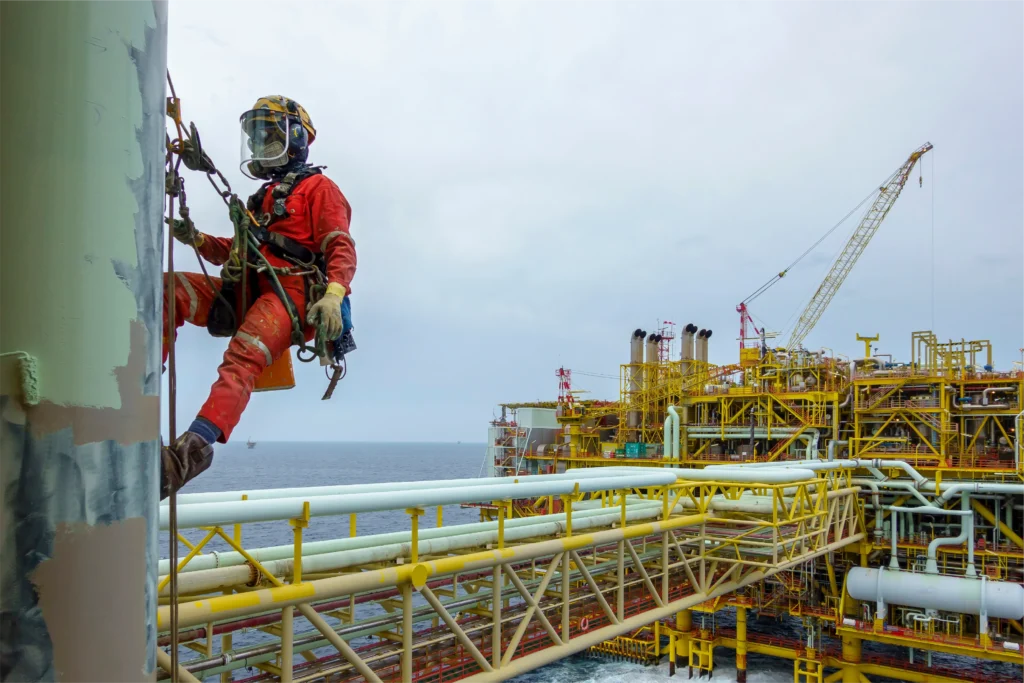
Falls from heights in refineries are subcategorized into ladder-related dangers and walkway issues.
Ladder Related Dangers
A single ladder in an oil refinery can ascend to 100 feet in height. Ladders contribute to more than 25% of all fatal falls. Oil, grease, perspiration, debris, lubricants, and even weather conditions contribute to dangerous slippery ladder steps.
Walkway and Scaffolding Issues
Improper assembly, weak planking, lack of maintenance, and overburdening stand as the primary catalysts behind walkway and scaffolding accidents. By giving these temporary structures proper attention and upkeep, a staggering 72% of such accidents could have been prevented.
OSHA reports 148 fall incidents per 100,000 workers each year. Owing to the inherent potential danger, most contractors emphasize more on high-rise scaffoldings, which are well protected, and end up overlooking the lower-rise surfaces. While, shockingly, 1/3 of fatal falls have been from heights lower than 15ft.
Object Contact/Collision/Nip
Danger lurks in the spaces between machinery and the ls of moving parts. In a heartbeat, workers can find themselves ensnared in a nightmarish scenario, caught between equipment, or struck by its relentless motion. Whether it be a maintenance task gone awry or a misplaced step these instances can have catastrophic consequences. The sprawling labyrinth of high-pressure pipelines further compounds the risk, with potential slips, trips, falls, and pinches lying in wait. Refinery workers often must navigate clusters of high-pressure pipelines for routine tasks. While a pipeline is robust enough to handle the human weight, the equation changes when pipeline integrity is compromised due to natural factors like corrosion. Coupled with a lack of training/awareness on the worker’s part, this may quickly escalate the situation.

60% of on-site fatalities in the oil and gas industry resulted from victims being caught in equipment or struck by its moving parts.
Caught-in/between hazards, although rare, usually lead to so much distress and trauma that they have been placed in OSHA’s fatal four. These kinds of accidents occur when someone is caught, crushed, squeezed, compressed, or pinched between two or more objects. There are very strict norms concerning the handling of machines, but their adherence is always subject to situational variance and compliance monitoring.
Confined Spaces
The dark recesses of tanks, pits, and process vessels hold a unique danger within refineries. These seemingly innocuous chambers can become insidious traps, suffocating workers through asphyxiation, poisoning, or engulfment. As workers venture into these confined spaces to carry out critical maintenance tasks, they expose themselves to unseen hazards that can claim their lives in an instant. With limited knowledge and awareness, these spaces become veritable death traps.
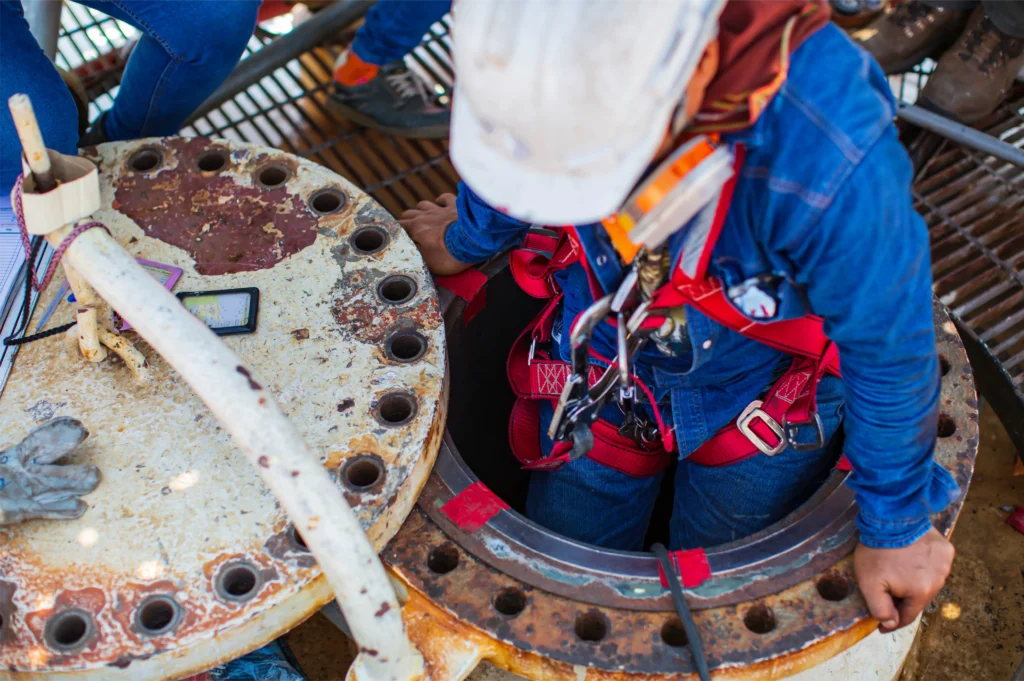
A review of 4,756 deaths reported in the OSHA database through 1984–1986 showed 146 deaths in confined spaces because of asphyxiation and poisoning and 42 deaths from mechanical asphyxiation due to engulfment.
Only through stringent compliance with safety regulations, rigorous testing, and continuous monitoring can we hope to prevent these sinister incidents.
Electrical Energy
Electricity plays a vital role in the oil and gas refinement process, with workers often required to handle or be in proximity to live electrical equipment that can pose dangers in cases of charge leakage. Most contact shock incidents stem from faulty or poorly maintained equipment, closely followed by improperly installed systems. However, the most lethal electrical accidents that occur in oil and gas facilities arise from a hazardous phenomenon called an arc flash, which is electricity jumping through ionized air between two high potential sources. It can be triggered by various causes, such as workers operating near high amp sources with conductive objects or breaks in insulation.

According to a ten-year study performed by ‘Electricite de France’ involving more than 120,000 employees, up to 77% of all on-the-job electrical injuries are caused by arc flash incidents, as against just 12% from contact shocks.
Other Notable Refinery Hazards
Vehicle Collisions
Refineries witness a lot of internal traffic movement between different units. Since most petrochemical installations are usually located in remote areas, all extra manpower and equipment requirements must be hauled long distances to bring them to the refinery.
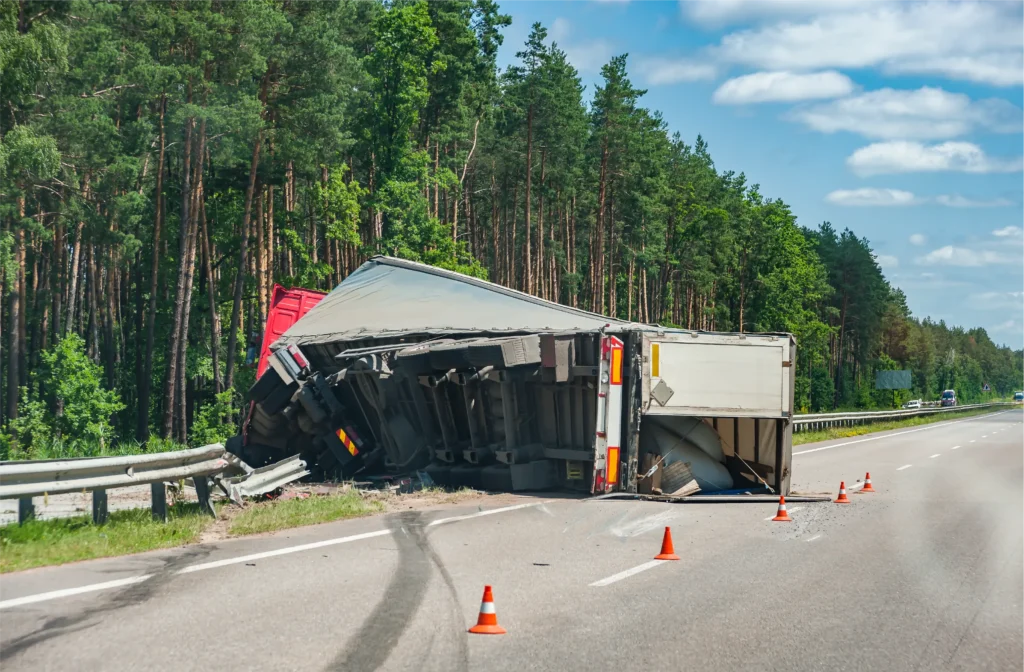
Overall, 4 of every 10 workers killed on the job in the oil and gas industry have succumbed to vehicle crashes, or because of injuries sustained during transportation events.
Chemical Exposures
Chemical exposures pose a grave challenge within the petrochemical industry, particularly in chemical units. These exposures span across three categories: respiratory (inhalation of compounds like benzene, carbon monoxide, formaldehyde, SPM, etc.), ingestion-based (oral exposure to VOCs, Arsenic compounds, etc.), and dermal (absorption through the skin of substances like lead, solvents, PAH, etc.).
In a mere decade, the United States witnessed over 1,500 chemical accidents at an alarming average of one incident every 2.5 days. Tragically, these chemical exposures claimed 58 lives, caused over 17,000 direct injuries, and forced the displacement of more than half a million people.
The Way Ahead
If you think safety is expensive, you should try an accident
Trevor Kletz (Chemical Engineer and Safety Expert, known as the Father of Inherent Safety)
As we conclude this expedition through the perilous terrain of refinery safety hazards, one question looms large; ‘How can we revolutionize industrial safety and create a future where accidents are a distant memory?’
The answer lies in embracing cutting-edge detection technologies to push the boundaries of hazard prevention to unprecedented heights. Artificial Intelligence-powered automatic detection technologies, equipped with unprecedented capabilities empower safety officers to plan, execute, and monitor with unparalleled precision. We now possess the ability to optimize emergency response time through continuous “guided real-time” monitoring, meticulously detecting even the most minuscule safety hazards.
The result- A future where accidents are vanquished, courtesy of real-time actionable insights that propel industrial safety to uncharted frontiers.
At the forefront of this transformative journey stands T-Pulse, the leading AI Health, Safety, and Environment (HSE) technology for industries. Bolstered by state-of-the-art AI algorithms and real-time data analysis, it offers unmatched detection capabilities, empowering safety officers to proactively identify and address safety hazards. Learn how T-Pulse’s intelligent monitoring and maintenance solutions amplify pipeline life and reliability in large Oil and Gas facilities. Embrace the future of industrial productivity and safety with T-Pulse today!





